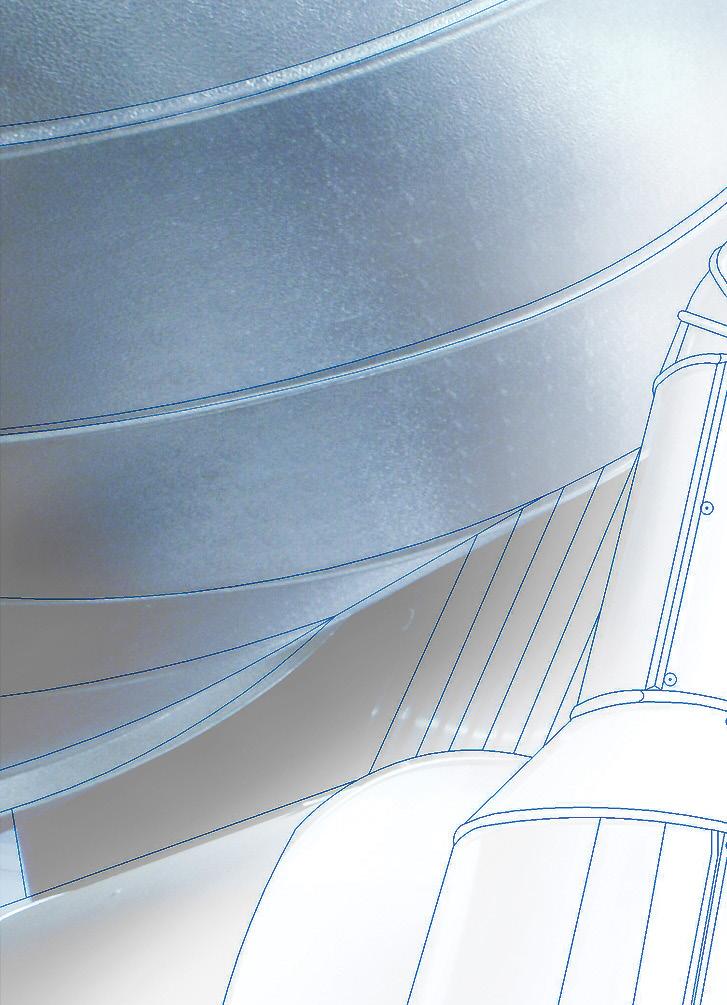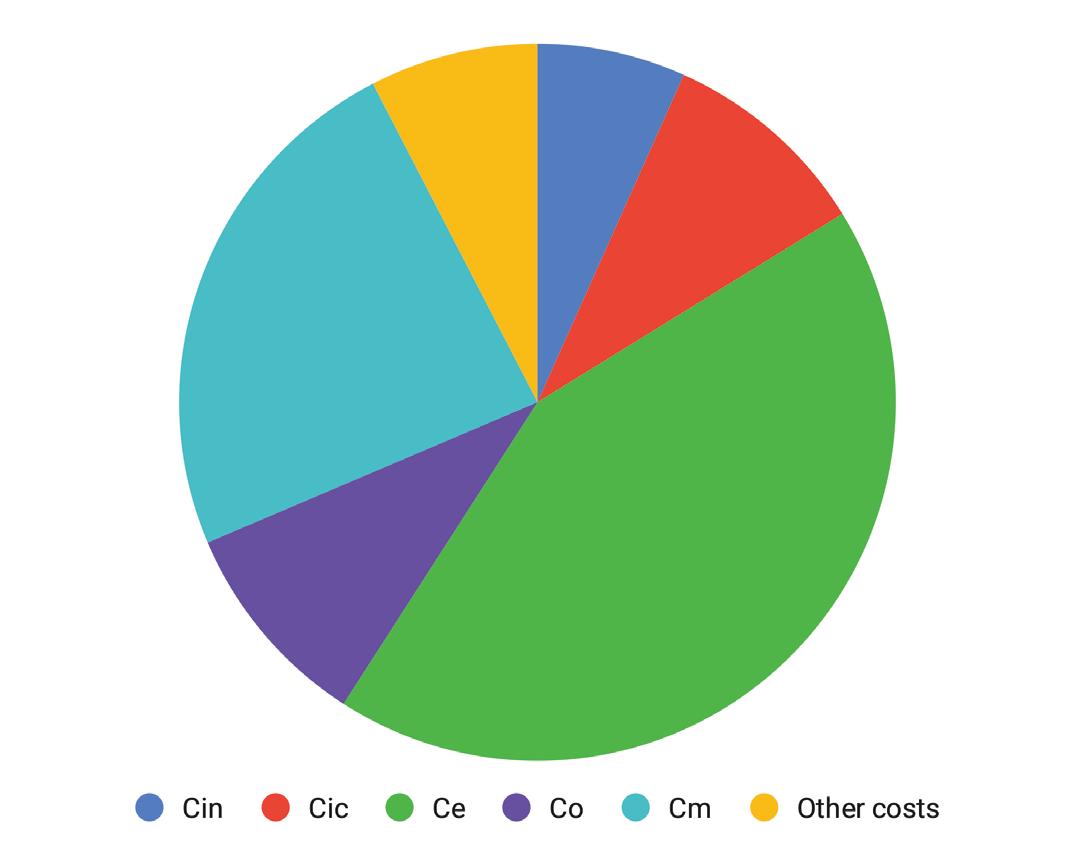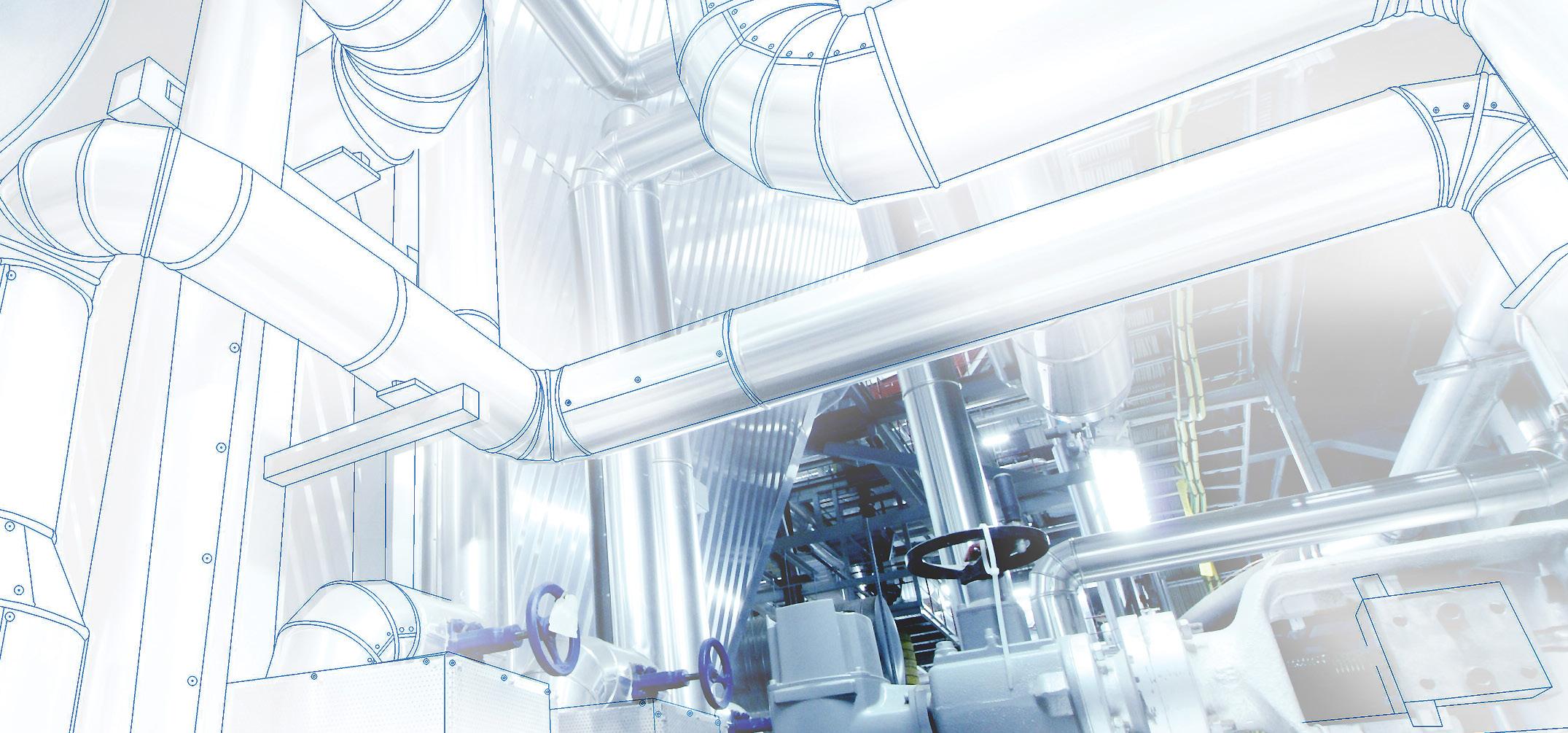
5 minute read
Efficient operations of pump systems (Part 6
Efficient operations of pump systems
(Part 6)
Advertisement
The PIA’s Australian Pump Technical Handbook is a cornerstone text for the Australian pump industry and, in our opinion, a must-have for anyone who deals with pumps on a regular basis. In this ongoing series, we feature abridged chapters from the classic book to showcase the various areas covered and to reacquaint readers with the technical aspects of pumps. In this issue, we continue exploring energy efficiency in pumping systems, focusing on lifecycle costs.
Lifecycle cost (LCC) is an important factor to keep in mind when building or upgrading an existing pumping system. LCC can be estimated for the lifespan of a pumping installation from initial design to final decommissioning using the industry standard formula defined by the The Hydraulic Institute.
Of the costs represented in the formula, Cic, Cin, Ce, Co and Cm are the main variables with respect for pump selection. Due to this, comparisons of LCC are limited to these factors, and Cs, Cenv and Cd are grouped under the general heading of “other costs”, as they largely occur later in the equipment lifetime and are difficult to accurately estimate.
Graph 1 shows a typical breakdown of lifecycle costs. However, where there is a poorly selected and inefficient pump, energy costs – as well as operating and maintenance costs – should increase. On the other hand, while a correctly selected pump and appropriately sized pipework system might increase the capital cost, there is the long-term advantage that any differential cost should be compensated for by lower energy, operating and maintenance costs over the lifetime of the installation. Because of this, it is important to approach the purchase or upgrade of a pumping system as an investment decision, and apply the same business analysis to determine the payback period for a more efficient solution.
LCC = Cic + Cin + C e + C o + C m + C s + C env + Cd

Cic = Initial costs Cin = Installation and commissioning costs C e = Energy costs C o = Operational costs C m = Maintenance and repair costs C s = Downtime costs C env = Environmental costs Cd = Decommissioning costs
Graph 1: Typical pump lifecycle cost profile.
When designing a new pumping system, the LCC analysis is usually estimated based on current energy prices, and labour and parts costs. However, if it is considered relevant to the business, it is also possible to overlay the time value of money to the analysis. In this case, analysis should also include some allowance for likely increases in power rates and labour costs.
The LCC estimate should be applied to all pumps and components offered for a new system, and should help to establish the optimum solution. A simplified analysis of system costs versus pipe diameter to illustrate this methodology can be found in the Australian Pump Technical Handbook. However, it should be noted that for pump installations that operate more than 2,500 hours per annum and for more than ten years, the power costs usually outweigh all other costs.
LCC analysis to reduce losses in pumping systems

Research has been carried out in the US and Europe to analyse LCC in order to develop strategies for reducing losses in pumping systems and reducing power consumption.
This research includes: • Pumping systems account for 20 per cent of the world’s electrical energy demand and 25-50 per cent of the energy usage in industrial plants • Energy usage depends of design of the pump, design of the installation and the way the system is operated • Reducing energy costs should have environmental benefits
With evidence showing there are cost savings associated with determining LCC, there are a number of possible explanations as to why LCC has not been widely embraced.
New installations: • Many only look for short-term returns • Design focus is more on capital and installation costs, while less consideration is given to energy costs or power and maintenance costs • Design and construct contracts encourage selection of the lowest bidder for pump supplies • Some aspects of LCC calculation require assumptions to be made which may influence the payback period
Existing installations: • There is a mentality of "if it’s not broken, don’t fix it", along with entrenched opinions on equipment performance • Considerations for cash flow or production output override consideration for power consumption • There is inadequate data about actual plant performance over time, as well as poor records of maintenance and repair costs
www.pumpindustry.com.au Summary
Selecting the best pump for a particular application requires a detailed description of the conditions of service and an accurate calculation of system resistance. A system curve is useful to assess the limits of operation, allowing pump suppliers to recommend appropriate pump selections.
In many cases, operational reliability of a plant is a key factor, and needs to be considered against the sometimes competing need for high efficiency.
While the focus of these past six articles about efficiency operations of pump systems has been on centrifugal pumps, similar considerations would be applied to positive displacement pumps. Positive displacement pumps are normally used for fluids with high viscosity, for low flows and high pressures, and where an accurate flow is required for every pump revolution. The efficiency of these pumps is dependent on a determination of friction and leakage losses. Friction losses in the system depend on the rate of flow, whether it is constant or pulsating, and fluid characteristics.
It is important to ensure the validity of the data provided by suppliers as tolerances are often applied to performance data that are not accounted for in the design process. Therefore, efficiency of the total plant should be evaluated on verifiable performance data rather than published data in catalogues as this data may not be sufficiently accurate for design purposes.
When designing a pumping system, care should be taken for all components selected, including piping, valves and drive options, and experience in this discipline can often help to avoid the common pitfalls and traps that occur in some installations. With a wide variety of drive options available, the final selection is often dependent on operational considerations.
While looking at selecting pumps with high efficiency can be useful, taking a system approach is more likely to result in long-term benefits. Calculating LCC of the entire system is appropriate for evaluating the best return on investment of a pumping system over its lifetime.
Further information and detailed diagrams, equations and schematics can be found in the Australian Pump Technical Handbook, available from the PIA website. In the next edition of Pump Industry, we continue to explore pump materials.










